Enhance your health with free online physiotherapy exercise lessons and videos about various disease and health condition
Rotator Cuff Physical Therapy
Rotator Cuff Physical Therapy protocol has been developed for the patient following a rotator cuff surgical procedure. This protocol will vary in length and aggressiveness depending on factors such as:
- Size and location of tear
- Degree of shoulder instability/laxity prior to surgery
- Acute versus chronic condition
- Length of time immobilized
- Strength/pain/swelling/range of motion status
- Rehabilitation goals and expectations
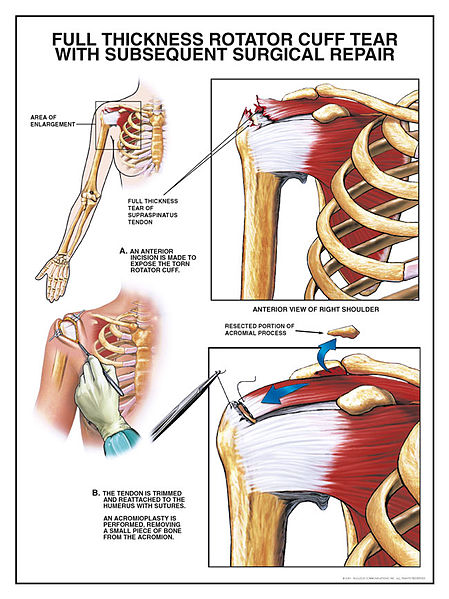
Early passive range of motion is highly beneficial to enhance circulation within the joint to promote healing. The protocol is divided into phases. Each phase is adaptable based on the individual and special circumstances. The overall goals of the surgical procedure and rehabilitation are to:
- Control pain, inflammation, and effusion
- Regain normal upper extremity strength and endurance
- Regain normal shoulder range of motion
- Achieve the level of function based on the orthopedic and patient goals
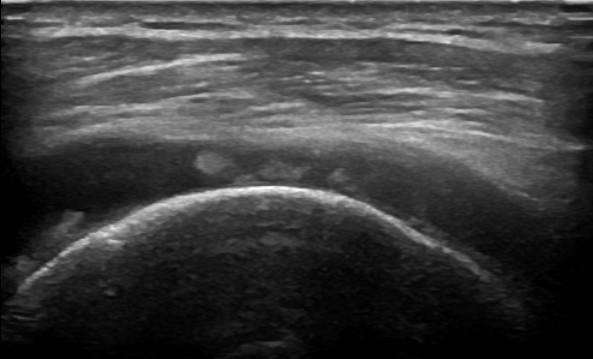
Return to activity requires both time and clinical evaluation. To safely and most efficiently return to normal or high level functional activity, the patient requires adequate strength, flexibility, and endurance. Functional evaluation including strength and range of motion testing is one method of evaluating a patient’s readiness return to activity. Return to intense activities following a rotator cuff repair require both a strenuous strengthening and range of motion program along with a period of time to allow for tissue healing. Symptoms such as pain, swelling, or instability should be closely monitored by the patient.
Rotator Cuff Physical Therapy Phase 1: Week 1-3 Rotator Cuff Repair
WEEK 1-3 Rotator Cuff Exercise Goals
- Promote healing of repaired rotator cuff
- Control pain and inflammation
- Gradual increase of ROM
- Independent in HEP
- Delay muscle atrophy
ROM
- Gradual ↑ Passive ROM in scapular plane Pendulum exercises
- Elbow (flex/ext) range of motion
- Initiate rope/pulley week 3-4 post-op
- Initiate passive ER wand exercise week 3-4 not to exceed 45° or ER at 45° abduction
STRENGTH
- NO Active Shoulder flexion or abduction allowed in the first 3 weeks
- Grip strengthening with putty or ball
BRACE
- Brace for 3 weeks or Brace removed to perform exercises above
MODALITIES
- Electrical stimulation and ultrasound as needed
- Ice 15-20 minutes
Rotator Cuff Physical Therapy Phase 2: Week 3-6 Rotator Cuff Repair
WEEK 3-6 Rotator Cuff Exercise Goals
- Control pain and inflammation
- Initiate light RC muscle contraction
- Gradual increase in ROM
- Initiate light scapular stabilizer contraction
ROM
- Gradual ↑ Continue PROM as needed
- Initiate Grade I-II joint mobilization
- Pendulum exercise
- Elbow (flex/ext) range of motion
- Rope/Pulley (flex/abd/scaption) Wand activities in all planes
- Initiate gentle posterior capsule stretching
- Initiate gentle IR stretching
STRENGTH
- Continue grip strengthening as needed
- Initiate submaximal isometrics at week 4
- Initiate supine AROM exercises without resistance
- Initiate UBE without resistance at week 4
- Initiate scapular stabilizer strengthening-active assisted Shrugs Shoulder retraction
BRACE
- D/C wk 3-4 Discharge brace at week 3-4
MODALITIES
- E-stim as needed Ice 15-20 minutes
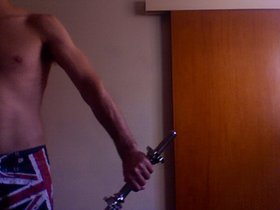 |
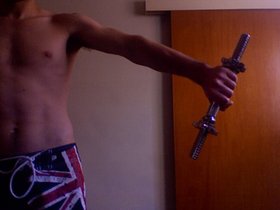 |
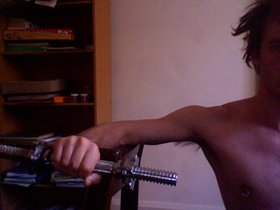 |
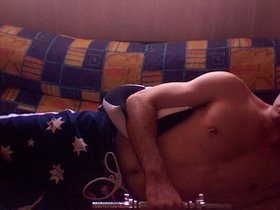 |
Rotator Cuff Physical Therapy Phase 3: Week 6-12 Rotator Cuff Repair
WEEK 6-12 Rotator Cuff Exercise Goals
- Minimize pain and swelling
- Reach full ROM
- Improve upper extremity strength and endurance
- Enhance neuromuscular control
- Normalize arthrokinematics
ROM
- Full ROM Continue all ROM from previous phases
- 10-12 wk Posterior capsule stretching
- Initiate Grade II-IV joint mobs as needed
- Rope/Pulley (flex, abd, scaption)
- Towel stretching Wand activities in all planes
STRENGTH
- Continue with all strengthening from previous phases increasing resistance and repetition
- Manual rhythmic stabilization exercises at 90° flex Shoulder shrugs with resistance
- Shoulder retraction with resistance
- Supine punches with resistance
- Prone shoulder extension
- Prone rowing
- Prone ER with abduction
- Initiate forward flexion, scaption, empty can
- Sidelying ER
- Initiate D1/D2 patterns supine then standing
- Push-up progression
- UBE for endurance training
- Initiate plyotoss at chest then progress to overhead Bicep/Tricep work
- Isokinetic ER/IR at neutral at week 10-12
MODALITIES
- Ice 15-20 minutes
Rotator Cuff Physical Therapy Phase 4: Week 12-24 Rotator Cuff Repair
WEEK 12-24 Rotator Cuff Physical Therapy Exercise Goals
Read research article about importance of Physical Therapy in Rotator Cuff Tear on Pubmed
- Full painless ROM
- Maximize upper extremity strength and endurance
- Maximize neuromuscular control
- Initiate sports specific training/functional training
ROM
- Continue with all ROM activities from previous phases
- Posterior capsule stretching
- Towel stretching
- Grade III-IV joint mobs as needed for full ROM
STRENGTH
- Progress strengthening program with increase in resistance and high speed repetition
- Initiate IR/ER exercises at 90° abduction
- Progress rhythmic stabilization activities to include standing PNF patterns with tubing
- Initiate single arm plyotoss
- Initiate military press, bench press, flys, lat pulldowns
- UBE for strength and endurance
- Initiate sport specific drills and functional activities
- Initiate interval throwing program week 16-20
- Initiate light upper body plyometric program week 16-20
- Progress isokinetics to 90° abduction at high speeds
MODALITIES
- Ice 15-20 minutes
Return from rotator cuff physical therapy to Orthopedic Physiotherapy
Return from rotator cuff physical therapy to Home Page
Recent Articles
|
Author's Pick
Rating: 4.4 Votes: 252 |

